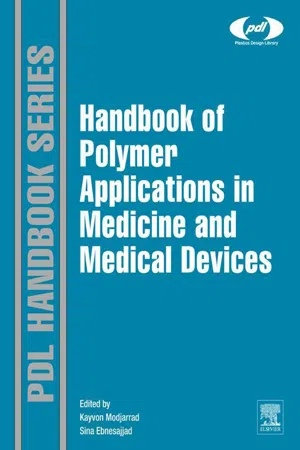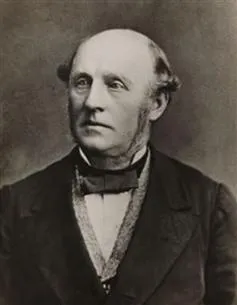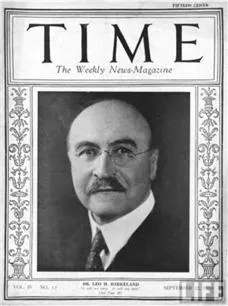![]()
1
Introduction
Kayvon Modjarrad, National Institute of Allergy and Infectious Diseases
The history of plastics and medical devices traces a complex course of slowly evolving ideas punctuated by moments of intellectual revolution. When viewed from the vantage of retrospect, it becomes apparent that milestones in the progress of biomaterial science represent culminations of gradual shifts in theory and iterative experimentation. This has been as true for methodological developments in polymer chemistry as it has for technological breakthroughs in medical equipment design. The two disciplines, though now inextricable from one another, initially advanced along largely separate and occasionally redundant paths. Until the latter decades of the twentieth century, physicians and surgeons modified existing materials to create and refine devices according to their clinical needs while chemists and engineers synthesized materials de novo without specific attention to their potential medical applications. In the modern era, however, the lines between the chemical and biological sciences have blurred, paving way for an interdisciplinary approach toward the design and application of medical plastics.
Keywords
synthetic polymer; medical plastics; medical devices
Outline
1.1 History
1.2 A Historical Example
1.3 Anthology Architecture
1.4 Summary
References
Science and technology do not develop seamlessly but rather by major and painful changes in accepted wisdom. Such changes are preceded by a period of profound uncertainty as the accepted solutions become plainly unsatisfactory at solving the problem.
—Thomas S. Kuhn, The Structure of Scientific Revolutions [1]
The history of plastics and medical devices traces a complex course of slowly evolving ideas punctuated by moments of intellectual revolution. When viewed from the vantage of retrospect, it becomes apparent that milestones in the progress of biomaterial science represent culminations of gradual shifts in theory and iterative experimentation. This has been as true for methodological developments in polymer chemistry as it has for technological breakthroughs in medical equipment design. The two disciplines, now inextricable from one another, initially advanced along largely separate and occasionally redundant paths. Until the latter decades of the twentieth century, physicians and surgeons modified existing materials to create and refine devices according to their clinical needs while chemists and engineers synthesized materials de novo without specific attention to their potential medical applications. In the modern era, however, the lines between the chemical and biological sciences have blurred, paving the way for an interdisciplinary approach toward the design and application of medical plastics.
The current anthology reflects this new paradigm, examining issues surrounding the use of medical plastics through the mutifaceted lens of chemical and biomedical engineering, microbiology, toxicology, nanochemistry, physics, and informatics. Historically, plastics as biomaterials have been reviewed almost entirely in the context of surgical implants. The collection of chapters that follows surveys a broader, newer array of applications for medical plastics that includes diagnostic equipment, product packaging, drug delivery devices, and tissue regeneration. These novel uses for plastics have translated into a surge in the volume of medical devices and equipment being employed around the world. Newer technologies, such as medical molding and packaging, have been responsible for much of the growth in the past several years. However, traditional applications of medical plastics continue to drive the industry forward as well. For example, 300,000 people around the world undergo cardiac valve replacement every year [2]. And in 2011, more than 150 million people wore silicone or hydrogel-based contact lenses, a 25% rise from a decade earlier [3]. The increasing demand for these products has led to an economic resurgence for the field as a whole. Although medical products still only account for 1% of the plastics market share, the consumption of medical devices has tripled in the past decade to become a $300 billion global industry [4]. Over the next several years, the business of biological implants is expected to grow by 7% annually [5]. These trends are in large part a consequence of an aging population, a rising prevalence of chronic diseases, and a shift from invasive surgeries toward minimally invasive implantation procedures.
1.1 History
The emergence of synthetic polymers as a dominant force in medicine, though a recent phenomenon, is rooted in a long history of biomaterials that extends back several millennia. Historical evidence demonstrates that humans have been repurposing natural substances for medical use since the beginnings of civilization. Several thousand years ago, ancient Babylonians and Egyptians were fashioning surgical sutures from flax, hemp, and catgut. The archeological record is relatively quiet on surgical implants, though, until the seventh century AD when Mayans began grafting seashells to their mandibles. Another thousand years would pass before any additional progress was made in biomaterials. In the sixteenth and seventeenth centuries, Renaissance men Leonardo Da Vinci and Rene Descartes proposed their own designs for contact lenses [6]. But theory did not become practice for another two hundred years when the first glass lenses were manufactured for human use. Around this time, in the mid-1800s, the Industrial Age was in full force giving birth to a rapidly rising number of inventions. Even more importantly, scientists and engineers were making their discoveries through repeated experimentation. A new adherence to the scientific method was quickening the pace of biomaterials research, as the seeds of scientific thought grew into practical therapies within the course of several years instead of centuries.
The story of plastics begins here in the mid-nineteenth century (Figure 1.1) when, in 1862, a metallurgist named Alexander Parkes unveiled his eponymous invention, Parkesine, at the London International Exhibition (Figure 1.2). It was a chemically treated celluloid he had patented several years earlier to waterproof clothing fabrics. By adding solvents to a natural product, Parkes was able to create the first artificially modified thermoplastic. Parkes’ invention is often heralded as the birth of plastics. However, he owed much to the vulcanization process developed by Charles Goodyear and Thomas Hancock several decades earlier. Parkes, in fact, began his career by improving upon Hancock’s methods. And John Wesley Hyatt, a few years after Parkes, invented celluloid by applying the chemical principles of the same predecessors [6]. The work of these pioneers demonstrated proofs of concept that naturally occurring polymers could be molded for human use. And though these inventions were innovative in their own right, they still relied on the availability of compounds in the environment.
Figure 1.1 A timeline of medical plastic development and production.
Figure 1.2 Alexander Parkes, inventor of the first modified thermoplastic. (Science Museum/Science & Society Picture Library)
It wasn’t until the turn of the twentieth century that a polymer was synthesized de novo. In 1909, Leo Hendrik Baekeland combined formaldehyde and phenol to create a thermostable material that he, like Parkes, named after himself. Bakelite significantly accelerated the growth of the plastics industry by eliminating the need to procure natural products for alteration (Figure 1.3) [7]. By the 1930s, dozens of synthetic polymers were being produced for mass consumption. Textiles, toothbrushes, and furniture were in much larger supply and at a cheaper cost than they had ever been. Within the span of several decades, plastics had moved from a scientific oddity to a household staple. The demand for plastics, however, was far from reaching its peak. Consider the 1941 text, Plastics, that opens with a forecast of how humans will live in a world made entirely of plastic.
This plastic man will come into a world of colour and bright shining surfaces where childish hands find nothing to break…The walls of his nursery, his bath…all his toys, his cot, the moulded light perambulator in which he takes the air, the teething ring he bites, the unbreakable bottle he feeds from…all will be plastic…. As he grows, he cleans his teeth and brushes his hair with plastic brushes, clothes himself with in plastic clothes, writes his first lesson with a plastic pen and does his lessons in a book bound with plastic…[In the end] His own teeth are gone and wears a denture with silent plastic teeth and spectacles with plastic lenses…until at last he sinks into his grave in a hygienically enclosed plastic coffin.
—Yarsley and Couzens, Plastics [8]
Figure 1.3 Leo Baekeland, inventor of the first entirely synthetic polymer.
Written at the dawn of World War II, their prediction may have seemed hyperbolic at the time. However, during the war years that followed, plastics production quadrupled from 1 to 4 kilotonnes (now plastics use exceeds 250 megatonnes annually) [9,10]. World War II also drove the expansion of plastics from the home to the battlefield. Parachutes and aircraft parts, gun barrels, and helmets were all taking advantage of the malleable and durable properties of synthetic polymers. Even the Manhattan Project relied on polytetrafluoroethylene (PTFE), or Teflon®, to contain the corrosive byproduct of uranium hexafluoride used to make the atomic bomb [11].
But it wasn’t until the post-war period that the plastics industry targeted medicine as its new frontier. Other materials, such as metals, had been regularly used as bone and dental implants for decades. However, the union of poly...



